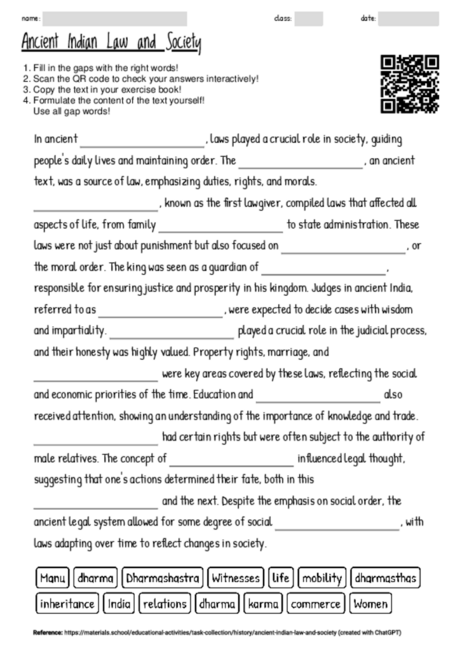Ancient Indian Law and Society
Cloze texts like the one on ancient Indian law serve multiple educational purposes. They encourage students to actively engage with the material, requiring them to think critically about the context and the missing information. This interactive form of reading can enhance comprehension and retention of historical facts. By focusing on key terms, students are prompted to consider their significance and how they contribute to our understanding of ancient Indian society and its legal system. Such texts also invite discussion on broader themes, like the role of law in societal organization and the balance between authority and individual rights. Moreover, the task of filling in blanks can spark curiosity, leading students to conduct further research or ask insightful questions. Additionally, this method supports vocabulary development by exposing students to specific terminology related to ancient legal systems. The emphasis on dharma, karma, and the societal roles of various individuals in ancient India provides a holistic view of how law, morality, and social order were intertwined. Lastly, these activities can be easily integrated into broader curricular goals, such as developing critical thinking skills, understanding historical contexts, and appreciating cultural diversity.

